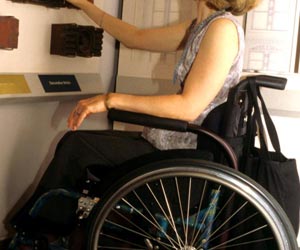
‘Researchers at Carnegie Mellon University is developing a robotic leg prosthesis. It can help users recover their balance by using techniques based on the way human legs are controlled.’
Tweet it Now
Over the next three years, this technology will be further developed and tested using volunteers with above-the-knee amputations.Other key members in the research team are Steve Collins, associate professor of mechanical engineering and robotics, and Santiago Munoz, a certified prosthetist orthotist and instructor in the Department of Rehabilitation Science and Technology at the University of Pittsburgh.
“Powered prostheses can help compensate for missing leg muscles, but if amputees are afraid of falling down, they won’t use them. Today’s prosthetics try to mimic natural leg motion, yet they can’t respond like a healthy human leg would to trips, stumbles and pushes. Our work is motivated by the idea that if we understand how humans control their limbs, we can use those principles to control robotic limbs,” Geyer said.
Geyer added that the technique is motivated by the idea that if we understand how humans control their limbs and those principles can be used to control robotic limbs.
Advertisement









